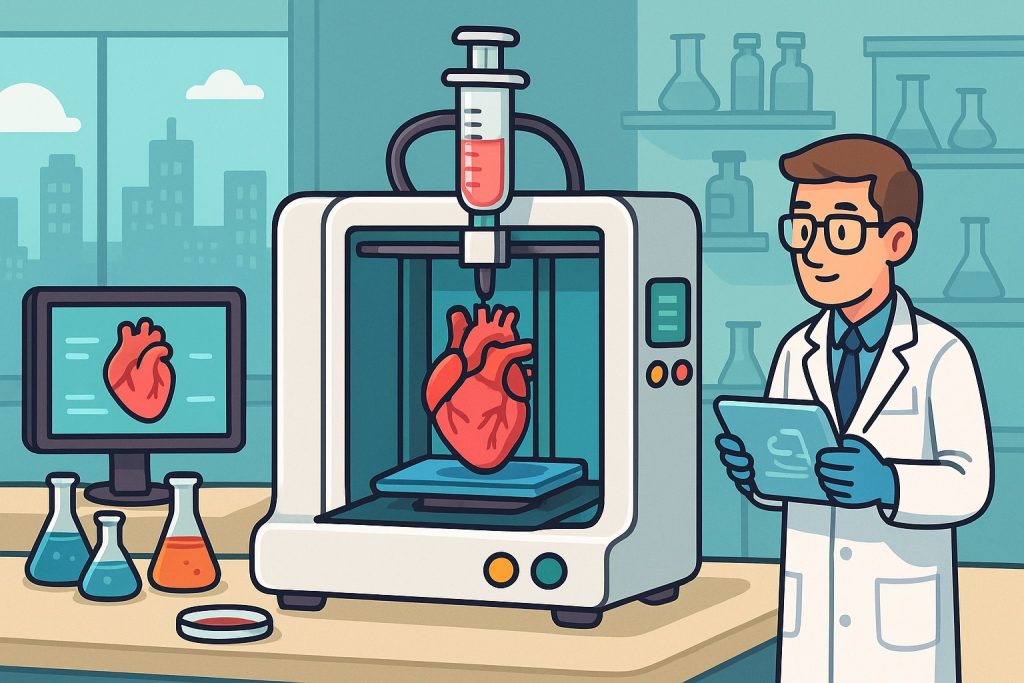Imagine a world where no one dies waiting for an organ transplant. Thanks to advances in 3D bioprinting, this once-unthinkable scenario is slowly becoming reality. Scientists are now exploring ways to print living tissues and even whole organs, offering new hope to millions suffering from organ failure.
What Is 3D Bioprinting?
3D bioprinting is a technology that uses layer-by-layer printing techniques to create living tissues using special materials called bioinks. These bioinks are made of living cells, growth factors, and biocompatible materials that mimic the structure and function of natural tissues.
Using a digital blueprint, bioprinters can create complex shapes — from simple cartilage patches to mini versions of kidneys, hearts, and livers.
Why the Need for Printed Organs?
- Organ shortages: Over 100,000 people are on organ transplant waiting lists globally at any given time.
- Immune rejection: Donated organs may be rejected by the recipient’s immune system.
- Lifelong medications: Transplant patients often need drugs that suppress their immune systems for life.
With 3D printing, it’s possible to create personalized organs using a patient’s own cells, eliminating rejection risk and cutting down on the need for donor organs.
Current Progress and Success Stories
Researchers have already printed:
- Skin grafts for burn victims
- Bladders used in clinical trials
- Vascular tissues to test blood flow
- Mini-organs (organoids) used for drug testing and disease modeling
In 2019, a team in Israel printed a small 3D heart with blood vessels using human cells — a major milestone. While it’s not ready for transplant yet, it proved the concept is possible.
Challenges Ahead
Despite rapid progress, several hurdles remain:
- Vascularization: Creating blood vessels to supply nutrients to large organs is complex.
- Functionality: Printed organs must perform as reliably as natural ones.
- Regulation: Safety and approval processes are still being developed.
- Cost: Equipment and materials are expensive, though prices are falling.
The Future of Organ Printing
Experts believe functional printed organs could be ready for transplants within the next 10–20 years. Beyond saving lives, this technology could revolutionize medical research by allowing scientists to test drugs on printed human tissues instead of animals.
In the long term, 3D bioprinting may become as routine as traditional surgery — offering customized, rejection-free organs printed on demand.
Glossary
- 3D bioprinting — the use of 3D printing to create biological tissues and organs
- Bioink — a printable material made of living cells and other biological substances
- Vascularization — the process of forming blood vessels inside tissues


